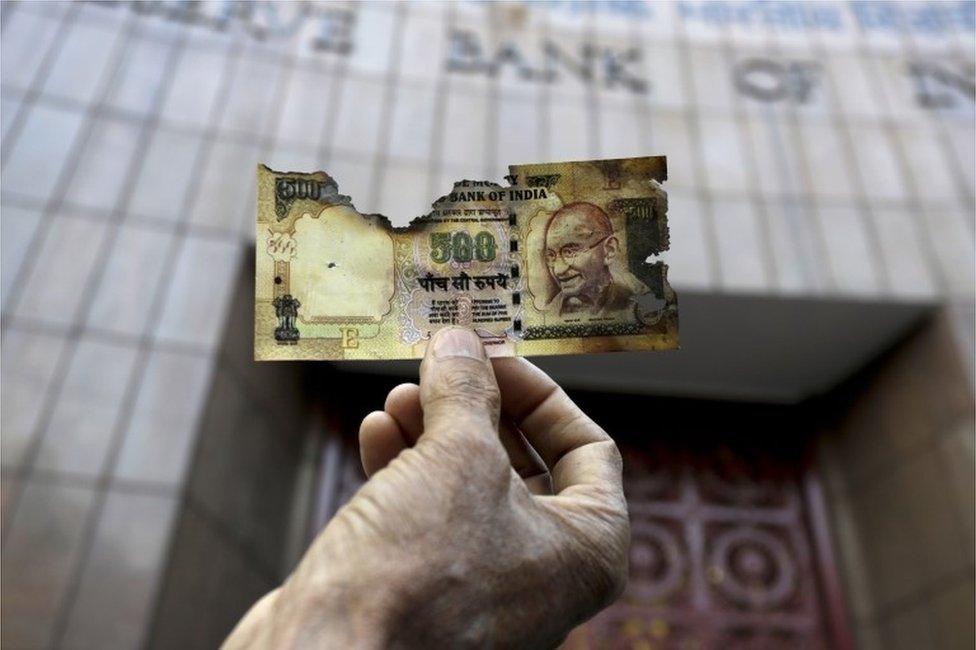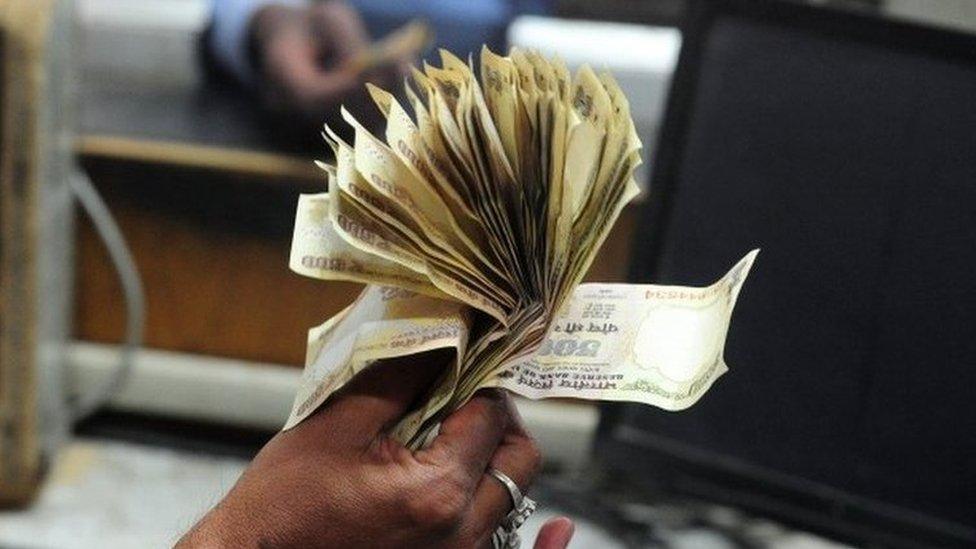How will India destroy 20 billion banknotes?
- Published

India will destroy some 20 billion "expired" banknotes
India's central bank will have to destroy, by one estimate, some 20 billion "expired" banknotes after it scrapped two high-value denominations - the 500 ($7.60) and 1,000 rupee notes - this month to crack down on "black money" or illegal cash holdings.
To give some idea of the amount of the currency that represents - there were more than 90 billion banknotes in circulation in India last March.
Most central banks destroy soiled and mutilated banknotes on a regular basis and replace them with new, crisp ones.
The Reserve Bank of India, similarly, shreds such notes and makes briquettes of them. But they are not your usual briquettes.
Briquettes - usually made of farm waste in India - are used for cooking, lighting and heating. They are cheaper than coal, have lower ash content, are less polluting, and easier to store and pack. They are mostly used as fuel in factory boilers.
But briquettes made out of shredded cash are brittle and serve no such purpose, a senior central bank official told me.
So the bank's 27 shredding and briquetting machines in 19 offices across India will now snip the expired banknotes into the smallest of pieces and the resulting briquettes will be then dumped in India's vast landfills.
Sometimes the shredded currency is also recycled to make files, calendars and paper weights and ballpoint pen shells, tea coasters, cups and small trays as souvenirs for guests.
The practice is similar in the US, external: counterfeit banknotes are sent to the Secret Service, while unfit notes are shredded and sent to landfills or given away as souvenirs to the public touring the Federal Reserve Bank.

All expired banknotes will be shredded
Central bank officials believe shredding 20 billion banknotes will not be a huge challenge. In 2015-16 the Reserve Bank of India destroyed more than 16 billion soiled notes. More than 14 billion were removed in 2012-2013 after nearly 500,000 fake notes were found in the system.
"Destroying so much cash is not a challenge because we have enough shredding and briquetting machines with very high capacities. These are automatic machines which shred the cash into the finest of pieces," says an official. So, India's mountain of expired currency will soon become rubbish, literally.

Cash in India
India is the largest producer and consumer of currency notes after China
Banknotes in circulation have increased from 124 million in 1935 to more than 90 billion in 2016
Early currency in form of IOUs and promissory notes issued by banks and royal courts began in India in the late 18th century
Use of government paper currency began in 1861
The Reserve Bank of India took over money supply operations in 1935
Indian currency notes were printed in England until the late 1920s
India has four presses printing banknotes and four mints for making coins
